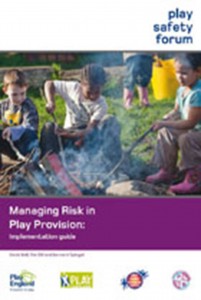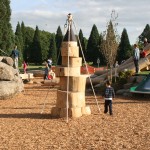Managing Risk in Play Provision: New Risk Benefit Analysis Tool
Nature Play is making its way into our mainstream society. We are seeing requests for, and plans to implement, nature play areas in schools, parks, kids’ destinations and recreation areas. Most people are on board with the general concepts. Just about everyone loves the evocative imagery of the spaces. Even those that have not seen the research inherently understand the benefits of playing in nature. So, what is holding us back? There is more likely than not a voice in the room asking about safety and risk.

Current safety procedures are based on ASTM (American Standard for Testing and Materials) and CPSC (Consumer Product Safety Commission) guidelines designed for playground equipment. There are many difficulties in applying these guidelines to a log, a rock, or a water channel. New national guidelines for natural play and learning areas begin to address this misalignment. You can see my post on these guidelines here.
In this post I wanted to talk about balancing risk and benefit. There is a great UK based risk benefit balancing tool that was just developed. I think it has many possibilities for use in US natural play areas too. How do we design and build play opportunities that challenge and offer risk, but protect from serious injury?
“Risk management in play contexts is different from workplace or factory contexts in one crucial respect. In play provision, a degree of risk is often
beneficial, if not essential. Children and young people enjoy challenging, adventurous play opportunities where they can test themselves and extend
their abilities. Giving children the chance to encounter hazards and take risks provides other benefits, such as the chance to learn how to assess and
manage these and similar risks for themselves. Hence accidents and injuries are not necessarily a sign of problems, because of the value of such
experiences in children’s learning… Judgments about the balance between risks and benefits can be complicated. They involve many factors, and
are often partly subjective.”

This Risk-Benefit Assessment Form was co-authored by David Ball, Tim Gill and Bernard Spiegal on behalf of the Play Safety Forum. Sponsorship was provided by, and the copyright belongs to: Play Scotland, Play England, Play Wales and PlayBoard Northern Ireland. These are some of the biggest names in play safety and risk. They have created a form that can be filled in by interested parties when making decisions about play and risk. Not only do they provide a blank form, they have also provided an example and a Glossary of key terms.
Take a look and let me know what you think. I think it could be a very useful tool to document the decisions and thought process that goes into our play decisions.





